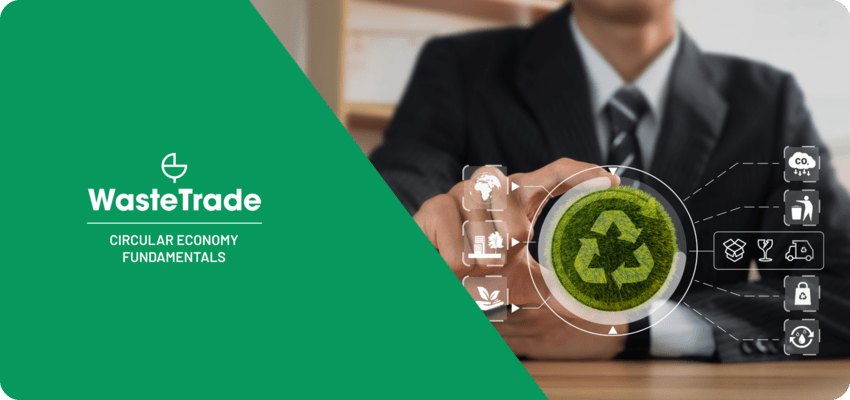Основи на кръговата икономика

Welcome to an insightful article that delves into the fundamental aspects of the Circular Economy, a transformative concept revolutionizing the way we view waste materials. As a global waste marketplace bridging the gap between buyers and sellers, WasteTrade aims to explore the core principles and definitions of the Circular Economy while showcasing diverse examples that illustrate its practical application. Join us in uncovering how this innovative approach is reshaping sustainability practices and paving the way for a more efficient and environmentally conscious future.
Кръгова икономика

The concept of the circular economy has gained significant momentum in recent years, as a sustainable alternative to the traditional linear model of production and consumption. In a circular economy, resources are used and reused in a closed-loop system, minimizing waste and maximizing efficiency. This approach promotes the regeneration of materials and resources, reducing the demand for new raw materials and lowering the environmental impact of industrial processes.
One of the key principles of the circular economy is to design products and systems with longevity and recyclability in mind. This involves creating products that can be easily disassembled and their components reused or recycled at the end of their lifecycle. By extending the lifespan of products through repair, refurbishment, and remanufacturing, businesses can not only reduce their environmental footprint but also tap into new revenue streams. Embracing the circular economy paradigm can drive innovation, foster collaboration across industries, and contribute to building a more resilient and sustainable economy for the future.
Circular Economy Definition

A circular economy is a system aimed at minimising waste and making the most of resources. It revolves around the concept of designing products that can be reused, repaired, and recycled, rather than being disposed of after single use. In a circular economy, the emphasis is on creating a closed-loop system where products and materials are used in a continuous cycle, ultimately reducing the need for extracting new resources and preventing waste from ending up in landfills or oceans.
This sustainable approach to economic activity not only benefits the environment by reducing pollution and preserving natural resources, but it also has the potential to create new economic opportunities. By transitioning to a circular economy, businesses can tap into innovative ways of producing and consuming goods, leading to cost savings, increased efficiency, and improved resilience against supply chain disruptions. Ultimately, embracing the principles of a circular economy can contribute to a more sustainable and prosperous future for society as a whole.
Principles Of The Circular Economy
The concept of the circular economy is based on the principles of reducing waste and maximizing the use of resources. Instead of the traditional linear model of ‘take, make, dispose’, the circular economy aims to create a closed-loop system where products and materials are reused, repaired, and recycled. This shift in thinking promotes sustainability and aims to minimise the environmental impact of our consumption patterns. By focusing on extending the lifespan of products and materials, the circular economy not only reduces the strain on natural resources but also decreases the amount of waste being sent to landfills.
Central to the principles of the circular economy is the idea of designing products with longevity and recyclability in mind. This involves using durable materials, applying eco-friendly production methods, and ensuring ease of disassembly for recycling at the end of a product’s life. The emphasis is on creating a system where resources can be used efficiently and continuously, reducing the need for new raw materials and ultimately lowering the carbon footprint of production processes. By embracing the circular economy principles, businesses can not only reduce their environmental impact but also drive innovation and create new opportunities for sustainable growth.
Примери за кръгова икономика
The concept of a circular economy is gaining traction as a sustainable solution to our current linear economic model. One successful example of a circular economy initiative is the fashion brand Patagonia, which encourages customers to repair and recycle their clothing rather than constantly buying new items. By offering repair services and using recycled materials in their products, Patagonia is able to extend the lifespan of their clothing and reduce overall waste. This approach not only reduces the company’s environmental impact but also promotes a shift towards more conscious consumer behaviour.
Another notable example of a circular economy in action is the collaboration between Dell and Goodwill Industries in the US. Dell collects used electronics from consumers and refurbishes them for resale, while Goodwill provides job training and employment opportunities for individuals in need. This partnership not only keeps electronic waste out of landfills but also creates social and economic benefits for communities. By adopting circular economy principles, Dell and Goodwill are able to create a more sustainable and inclusive system that benefits both the environment and society as a whole.
